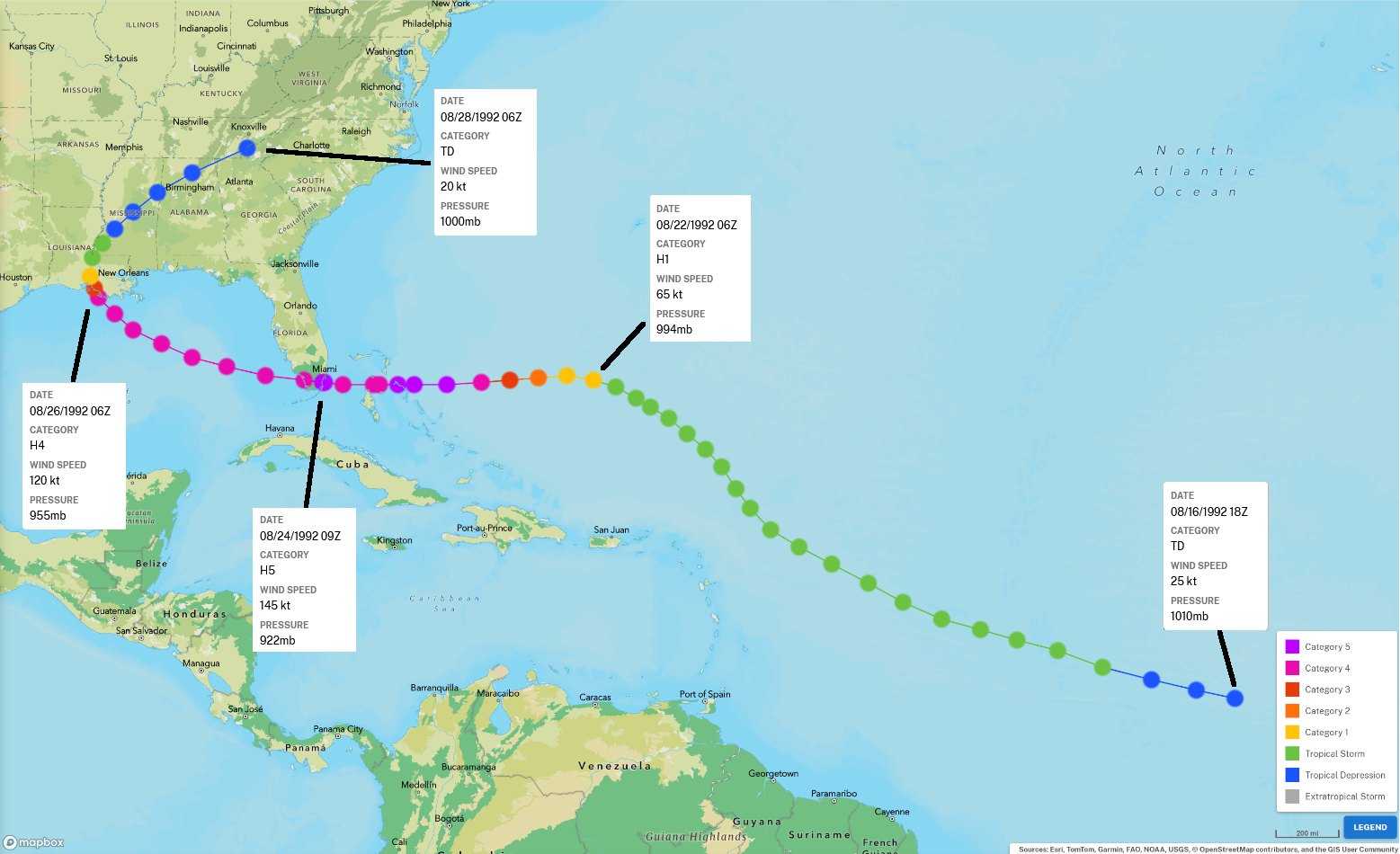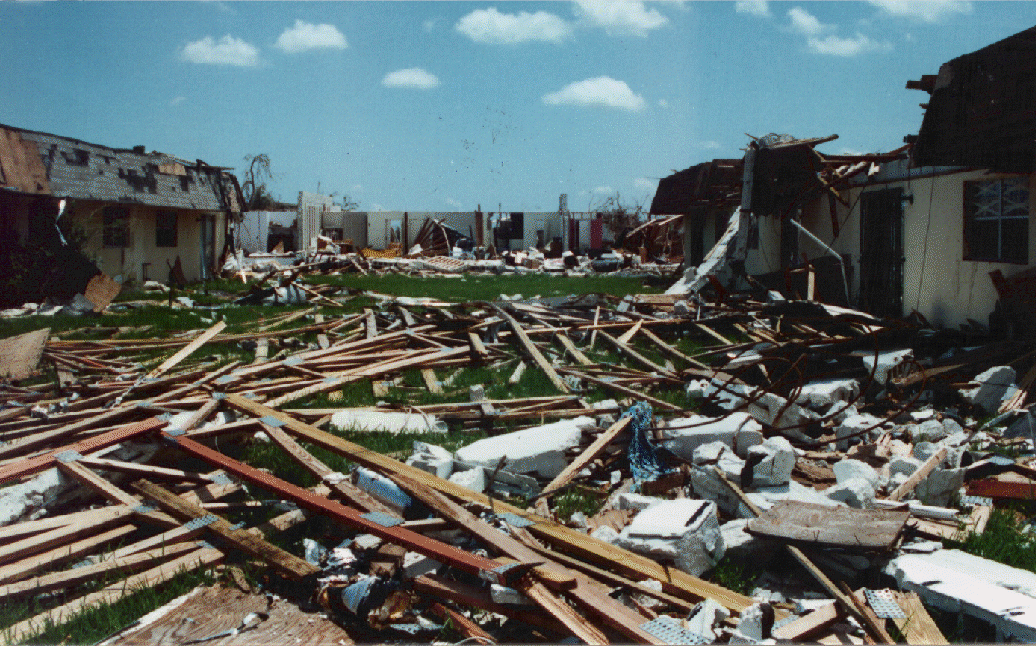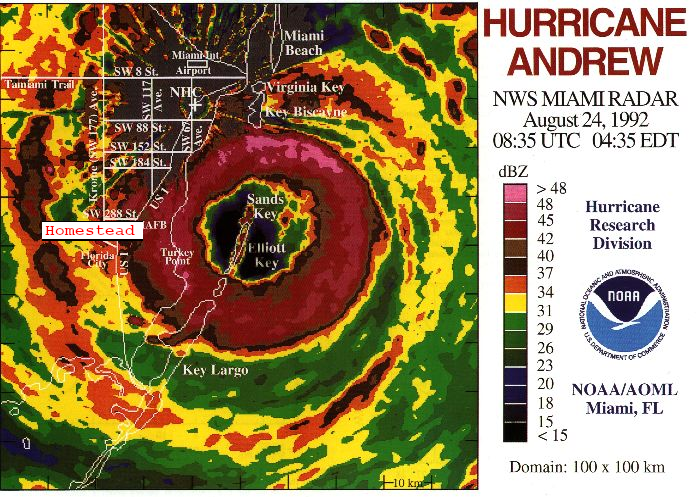News
‹ back to weather news
News
-
On this day August 24, 1992, Hurricane Andrew impacts southern Florida
Craig Mitchell, 24 August 2025Hurricane Andrew, one of the most powerful and devastating hurricanes to affect the United States, made landfall over southern Florida 33 years ago.
Hurricane Andrew began as a tropical depression in the Central Atlantic mid-August 1992. As the system moved rapidly to the northwest, it steadily intensified into a hurricane (category 1 hurricane – H1) on the 22nd and further intensitied where it would continue over southern Florida on the August 24th within the highest tropical storm category for North American systems, a destructive Category 5 Hurricane (H-5).
The hurricane maintained its destructive intensity as it continued across the Gulf of Mexico and then weakened to Category H-3 just prior to making a second landfall across the Louisiana coast on August 26.
Image loop: GOES Visible satellite imagery loop: Source: A Close-Up View of Hurricane Andrew passing over southern Florida CSU/CIRA & NOAA

Image: The historical path (with intensity categories) for Hurricane Andrew showing development on 16th August 1992 in the central Atlantic Ocean, reaching hurricane intensity to the east of Florida and across the Gulf of Mexico, and finally decaying into a tropical depression over the inland southeast states on the 28th of August. Source NOAA
At the time, Hurricane Andrew had laid claim to being the costliest and most destructive hurricane to impact the U.S continent, with costs estimated at $25 billion over southern Florida alone. Andrew reportedly destroyed over 25,000 homes and damaged over 101,000 others.

Image: Property damage from Hurricace Andrew. Source: NOAA
Tragically, as with most tropical weather systems of this severity, Andrew claimed 26 lives, while the death toll climbed to 65 through a further 39 indirectly related deaths.
The strongest wind speeds measured during Andrew's passage across Florida occurred within the hurricane's northern eyewall. The maximum sustained wind speed (average over a 1-minute interval) recorded during landfall was estimated at 230km/h with wind gusts to at least 270km/h.
(Note: the US records sustained wind speed averaged over a 1-min interval, whereas in Australia and within the World Meteorological Organisation, sustained wind speeds are averaged over 10 minutes. This will account for an approximate 10% increase in 1-minute speed compared to average over 10 minutes)

Image: Radar imagery of Hurricane Andrew’s eyewall at time of coastal crossing to the south of Miami. This was the final image recorded from the National Hurricane Centre (NHC) radar before being blown off the roof of the NHC centre. Source: NOAA
One story from this event was provided by a resident living near Homestead, Florida who experienced a direct hit during the passage of Andrew and some of the strongest winds over their property. Mrs Hall sheltered in a home constructed with 55cm concrete and coral rock walls and following the passage of Andrew, the only notable damage to her property were some broken windows. As the eye of the storm passed overhead, Mrs Hall recorded a minimum atmospheric pressure of 921hPa which was later confirmed by NOAA to be a reliable measurement.
A storm of this intensity also produced storm surge and extremely large waves that generated significant damage to coastal properties across southeast Florida as Hurricane Andrew made landfall during the morning of August 24. The peak storm surge was measured at 5.2 metres in the Bay of Biscayne, south of Miami.
In terms of strongest landfall hurricanes to impact the United States of America and measured by lowest central pressure, Hurricane Andrew ranks third behind the Labor Day hurricane of 1935 and Camille during 1969 with estimated recorded minimum pressures of 892hpa and 900hpa respectively.
- Other news
- Mon 25 Aug 2025 When will the Fiji surf pro finals day happen
- Sat 23 Aug 2025 Short-lived typhoon to develop in the West Pacific
- Fri 22 Aug 2025 Sydney on verge of third wettest August on record
- Fri 22 Aug 2025 Hurricane Katrina, 20 years on
- Fri 22 Aug 2025 Burst of fall temperatures to descend through US this weekend, next week

